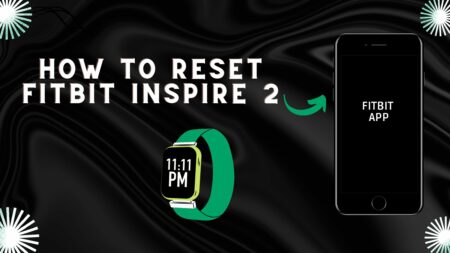
So, between you and me, let’s dive deep and decipher the mysteries of a Fitbit on its last legs. Strap in, or should I say… strap on? 🤪
| Feature | Symptom | Solution |
|---|---|---|
| Battery Life | Rapidly decreasing charge cycle | Optimize settings, reduce notifications & brightness, update software |
| Syncing Capabilities | Takes longer than usual or fails consistently | Check Bluetooth, update phone & Fitbit software |
| Display Functionality | Flickering, dead pixels, or unresponsiveness | Reset the device |
| Data Accuracy | Incorrect stats or unrecorded workouts | Compare with phone’s tracker, consider a replacement if consistent discrepancies occur |
| Band Condition | Wear, tear, or improper alignment on the wrist | Replace band or ensure correct fit |
Why Your Fitness Journey Deserves a Healthy Fitbit
Did you know a malfunctioning Fitbit can misreport your stats by up to 20%?
Picture this: You’re pushing yourself to the limit, thinking you’ve hit that 10,000-step milestone, but in reality, you’re falling short by a couple of thousand.
Heartbreaking, right? The real cost isn’t just about numbers—it’s the setbacks in your fitness goals.

Avoid the Trap:
Are you inadvertently sabotaging your health ambitions by ignoring your Fitbit’s silent cries for attention? Those misrecorded steps and miscalculated heartbeats are more than just glitches—they’re wake-up calls.
The Reality Check:
Stats Spotlight: Studies reveal that 1 in 3 fitness enthusiasts miss their goals due to faulty gadgets. That’s not a club you want membership in.
Visualize the Stakes:
Imagine standing at the marathon finish line, only to find out you ran an extra mile, thanks to a gadget goof-up. The upside? With the insights you’re about to dive into, you’ll ensure every drop of sweat counts in real time.
Question the Status Quo:
Still, believe your Fitbit is just a minor accessory in your fitness journey. Think again. Would you compromise on the quality of your running shoes? Then why let a fading Fitbit dictate your pace?
Solutions at Your Fingertips:
Quick Check: Perform a weekly sync and accuracy test.
Battery Buddy: Monthly charging routines can extend your Fitbit’s life.
Step Accuracy: Compare with a manual count every once in a while. Don’t let tech lapses slide!
Hey there, Fitbit fan!
Remember Jenny? The bubbly colleague from work who’s always flaunting her flashy neon Fitbit and never stops raving about her weekend hikes?
Well, last Tuesday, she was a ball of frustration. She had her best run ever—or so she thought.
Picture her excitement melting away when her Fitbit gave her stats that seemed, well, a tad bit off. And guess what? It wasn’t her running; it was her trusty Fitbit showing signs of fatigue.
Oopsy-daisy moments we’ve all had:
Now, I totally get it. When tech goes over our heads, it’s like someone speaking a foreign language. But let’s decode this together.
Think of your Fitbit as a plant. Just like how plants need water, sunlight, and a little chat (yes, I talk to my plants), your Fitbit needs updates, charges, and checks.
Stay with me, and I promise, with these easy-peasy insights, you won’t just be Jenny’s go-to tech guru at the next office party, but you’ll ensure your fitness journey isn’t hampered by a gadget hiccup.
So, let’s strap up and get those Fitbits in top-notch shape! 🌟
Signs Your Fitbit Is Dying: Know the Symptoms Before It’s Too Late

You’re mid-workout, dripping with sweat, and feeling accomplished.
You look at your Fitbit to check your progress, but something’s off. It isn’t the lack of steps or heart rate fluctuations; it’s the subtle cues your Fitbit is giving you.
Yes, just like other gadgets, your trusty fitness tracker can also show signs of wear and tear. Here’s how to decipher them.
Battery Life Isn’t What It Used to Be
Your Fitbit used to last days on a single charge, but now it seems you’re constantly reaching for that charger. Diminishing battery life might be your device’s cry for help.
Helpful Tip: Optimize your Fitbit settings. Turn off unnecessary notifications, reduce screen brightness, and remember to update the software. Sometimes, it just needs a little tune-up.
Syncing Seems to Take Forever
Remember when your data would instantly appear on your smartphone app? If syncing now feels like waiting for rain in a drought, your Fitbit might be on its way out.
Practical Advice: Ensure your Bluetooth is functioning properly. Sometimes, it’s not the Fitbit but rather the phone that needs a software update. If that doesn’t work, consider it a sign.
Display Issues Pop Up

If your Fitbit screen is more like a Picasso painting than a clear display, take heed. Flickering screens, dead pixels, or unresponsiveness are all symptoms of a potential problem.
Simple Solution: Reset your device. It’s the gadget world’s version of “Have you tried turning it off and on again?”
Your Stats Don’t Make Sense
You know you’ve been active, but your Fitbit says otherwise. Unrecorded workouts or drastically wrong stats could mean your device is failing.
Pro Tip: Compare your Fitbit’s step count with your phone’s built-in tracker. If there’s a major discrepancy, your Fitbit might be the culprit.
The Band Shows Wear and Tear

Sure, it’s external, but a deteriorating band can affect the device’s functionality, especially if it’s causing the tracker to sit improperly on your wrist.
Easy Fix: While changing the band can give your Fitbit a fresh look, if the core device is the issue, even a new band won’t save the day.
Recognizing these signs early can save you from unexpected interruptions during your fitness journey. It’s essential to keep an eye on your Fitbit’s health, so it can continue helping you monitor yours. Let’s keep those steps counted, and heartbeats tracked accurately. Because a healthy Fitbit means a happier you!
Conclusion
Your Fitbit isn’t just a device; it’s your fitness companion. Recognizing its cries for help ensures that you don’t face disruptions in your health journey.
By understanding the symptoms and applying the suggested solutions, you can either prolong its life or make an informed decision to upgrade.
Remember, a device in good working order provides accurate feedback, allowing you to make the best health decisions.
So, keep your Fitbit in peak condition to ensure it serves you accurately and efficiently.
FAQs
How often should I update my Fitbit’s software?
For optimal performance, it’s advisable to check for software updates at least once a month.
My Fitbit’s band is worn out, but the device works fine. Do I need a new Fitbit?
No, if the device is functioning well, you can simply purchase a replacement band. Ensure it’s compatible with your Fitbit model.
The display has minor issues, but the data seems accurate. Should I be concerned?
While minor display issues might not immediately impact the tracker’s performance, they can worsen over time. It’s wise to keep an eye on it and consider repairs or replacement if the problems escalate.
I’ve tried all the solutions, but my Fitbit is still not working correctly. What should I do?
It might be time to contact Fitbit’s customer support or consider investing in a new device if yours is significantly old.
Can I prevent my Fitbit from showing signs of dying early?
Regular updates, proper care, avoiding extreme conditions (like excessive heat or cold), and not overcharging can extend the lifespan of your Fitbit.
How long do Fitbit last?
Fitbit devices are known for their durability and long-lasting battery life. On average, a Fitbit can last anywhere from 5 days to a week on a single charge, depending on the model and usage. However, the lifespan of the device itself is usually around 2-3 years, but with proper care and maintenance, some users have reported their Fitbit lasting even longer. If you want more detailed information on the lifespan and maintenance of Fitbit devices, you can read more on this link: How Long Do Fitbits Last?.

![Carbonox Smart Watches: The Latest in Wearable Technology [2024]](https://wearurtech.com/wp-content/uploads/2022/05/Carbonox-smart-watches.webp)
![Simple Guidance For You Do Smart Watches Emit Radiation? [2024]](https://wearurtech.com/wp-content/uploads/2022/05/Do-smart-watches-emit-radiation.webp)

![How To Find Apple Watch If Dead – [Quick & Easy Steps 2024]](https://wearurtech.com/wp-content/uploads/2022/08/How-To-Find-Apple-Watch-If-Dead-Image--450x253.jpg)

